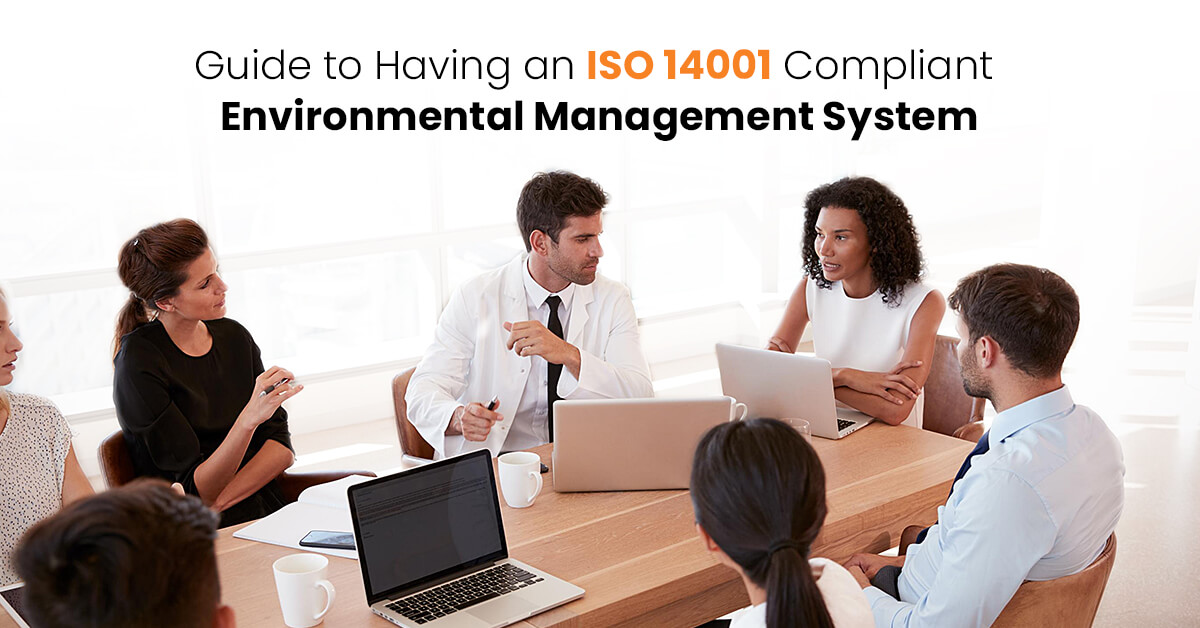
The International Organisation for Standardisation or ISO has created different management certifications, including ISO 14001 certification for the environmental management system. According to ISO.org, “Designed for any type of organization, regardless of its activity or sector, ISO 14001 certification can assure company management, employees, and external stakeholders that environmental impact is being measured and improved.” With more than 3,000,000 organisations certified around the world, it is time for your organisation’s environmental management system (EMS) to get certified with the ISO 14001 standard.
However, getting an ISO 14001 certified EMS with maximum benefits is not always as easy as it seems. Therefore, we have summed up some guidelines for you on how to develop a competent and comprehensive EMS by adhering to each ISO standard requirement.
Formulate an Environmental Policy
The first effective step for ISO certification is forming your business’s custom environmental policy. It will reflect your organisation’s effort towards environmental impact management, and help you have strong approaches, processes, and practices for dealing with your business’s environmental impacts. This environmental policy is essential because it acts as a strong testimony for your company, as it declares its commitment to reducing pollution, emissions, environmental risks, and optimising resource use.
Environmental Requirements and Framework Development
Employees of your business need to understand the importance of environmental management and the consecutive implementation of the ISO 14001 standard. Form an EMS framework of environmental impacts management by incorporating ideal manufacturing practices. Include certain programs and waste management measures that help to prevent pollution and other emissions from your processes into the soil or water bodies.
Setting up of Objectives
Without a set of objectives, it is not possible to formulate the EMS. Consult with expert environmental consultants to determine the objectives of your business while considering the impacts of your business processes and the ISO 14001 requirements. Define specific objectives related to your procurement, production, and distribution processes, and ensure continuous improvement in every area to prevent pollution. When forming the objectives, you should set timeframes for meeting the objectives. You should also update the objectives as environmental impacts change, and new circumstances arise in the business.
Preparing Resources
Resources imply personnel, special equipment, and tools that are needed to reach the objectives of your organisation. Senior management should designate a proper team who will be responsible for certifying the EMS with ISO 14001 standard and ensuring it meets the environmental performance goals. You need to train the environmental management team to ensure they are responsible for attaining the objectives.
Operational Control
From implementing proper methods of waste control to adopting practices of resource optimisation, you need to follow a hierarchy of processes to reduce environmental impacts. Develop the EMS and adhere to the ISO 14001 requirements, making sure to continuously monitor the processes and report the environmental impacts as well as any progress seen in mitigating them.
Prepare Corrective Actions
In EMS documentation, procedures or corrective actions for environmental hazards that may occur at any time must be included. With the help of your environmental management team, decide the course of actions needed to minimise the adverse impacts in emergencies. Subsequently, you will also need to find the potential causes of the hazards and eliminate them to prevent their reoccurrence. Provide mandatory training and awareness sessions to staff to make them aware of their duties in case of environmental emergencies.
Compliance Checking
This is the most crucial step when ISO 14001 certification is concerned. To ensure the EMS is in line with the regulations of the standard, perform an internal audit. Either create a reliable internal team to conduct the assessment, or hire professional auditors from a third-party quality assurance agency. Importantly, make sure to conduct the proper audits to ensure the organisation’s environmental performance is improved and the ISO requirements are met.
Continuous Evaluation and Enhancement
Of course, the internal auditing will conclude with a conclusive report provided by the professional auditors or assessment officers in your business. Use the report to improve the EMS and implementing better environmental practices. Conduct thorough internal audits at periodic intervals after attaining the environmental certification. It is necessary to keep an eye on the EMS performance, maintain its compliance with ISO 14001, and ensure that it is updated with evolving environmental needs.
Wrapping it Up!
These are the essential steps to progress and achieve ISO 14001 certification for your EMS. Though the steps are intricate and need a lot of resources and responsibilities, proper planning and thorough participation of the management of your organisation will help with each step. Once you are done with the internal auditing, contact a reliable registrar or accredited certification body with the help of quality assurance experts and apply for the certification. The certification body will go through the formal procedure, which is a 2-stage certification audit, and approve certification after being convinced by your EMS compliance.
Environmental management is the key for businesses to show their role in sustainability and prevention of hazards. At Compliancehelp, we are their guiding partners in their ISO certification process. We have assisted a large number of organisations with quality assurance certification, including ISO 14001. So, feel free to contact us.

Get connected with us on social networks!